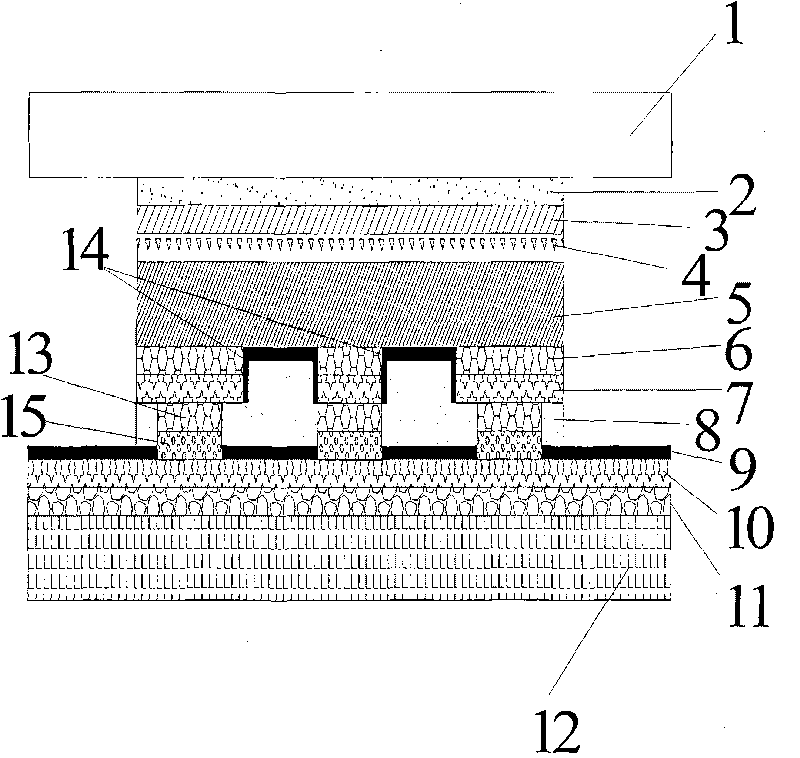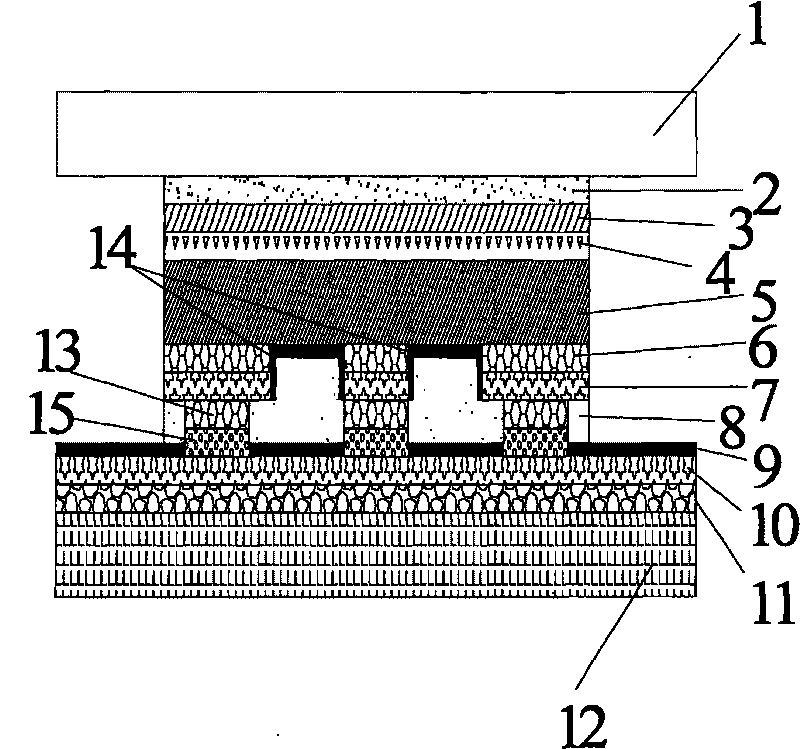Back-illuminated mercury cadmium telluride long-wave light-guide type infrared flat-panel detector
A mercury cadmium telluride and detector technology, which is applied in the field of photoelectric detectors, can solve the problems of small gaps between photosensitive surfaces of arrays and the inability to arrange signal leads, and achieve the effects of easy wiring, solving heat conduction problems, and ensuring imaging quality
- Summary
- Abstract
- Description
- Claims
- Application Information
AI Technical Summary
Problems solved by technology
Method used
Image
Examples
Embodiment Construction
[0015] Combined with the accompanying drawings of the specification, taking the 8×8 back-illuminated HgCdTe long-wave photoconductive infrared area detector as an example, this patent will be further described in detail. The process used is the conventional process for forming HgCdTe chips:
[0016] 1. The first surface treatment: the first surface of the selected mercury cadmium telluride material is subjected to a series of treatments such as rough grinding to remove 100 μm, polishing to remove 40 μm, and chemical etching to remove 3 μm. After removing the damage, a layer is grown The anodized layer (4) is used as a passivation film, and another layer is grown on the entire surface anti-reflection layer (3);
[0017] 2. SMT: Use low-temperature epoxy glue (2) to paste the HgCdTe material on the first side and the zinc selenide substrate (1) together, and cure the epoxy glue in a fully automatic tablet press , since what we are preparing is a long-wave device, we should tr...
PUM
 Login to View More
Login to View More Abstract
Description
Claims
Application Information
 Login to View More
Login to View More - R&D
- Intellectual Property
- Life Sciences
- Materials
- Tech Scout
- Unparalleled Data Quality
- Higher Quality Content
- 60% Fewer Hallucinations
Browse by: Latest US Patents, China's latest patents, Technical Efficacy Thesaurus, Application Domain, Technology Topic, Popular Technical Reports.
© 2025 PatSnap. All rights reserved.Legal|Privacy policy|Modern Slavery Act Transparency Statement|Sitemap|About US| Contact US: help@patsnap.com


